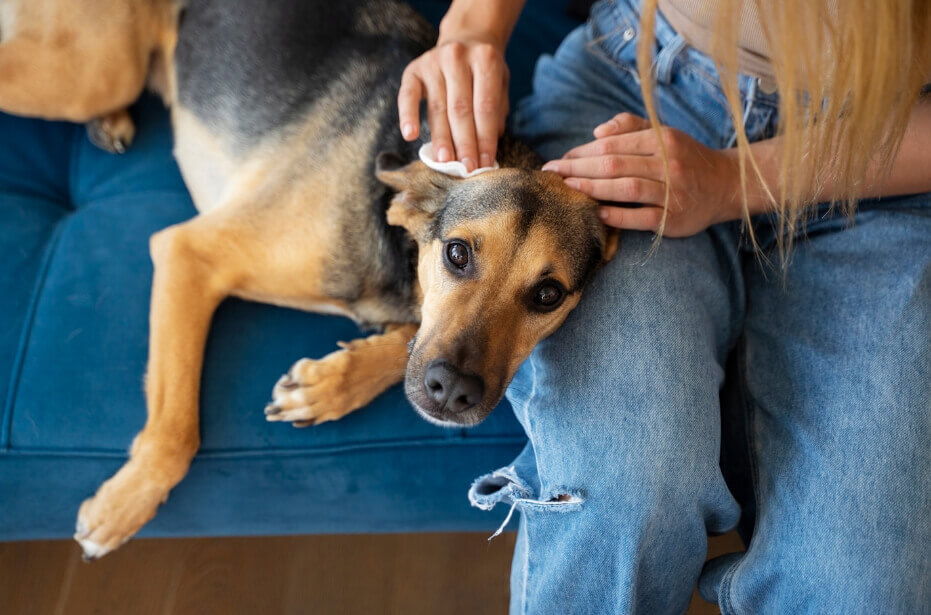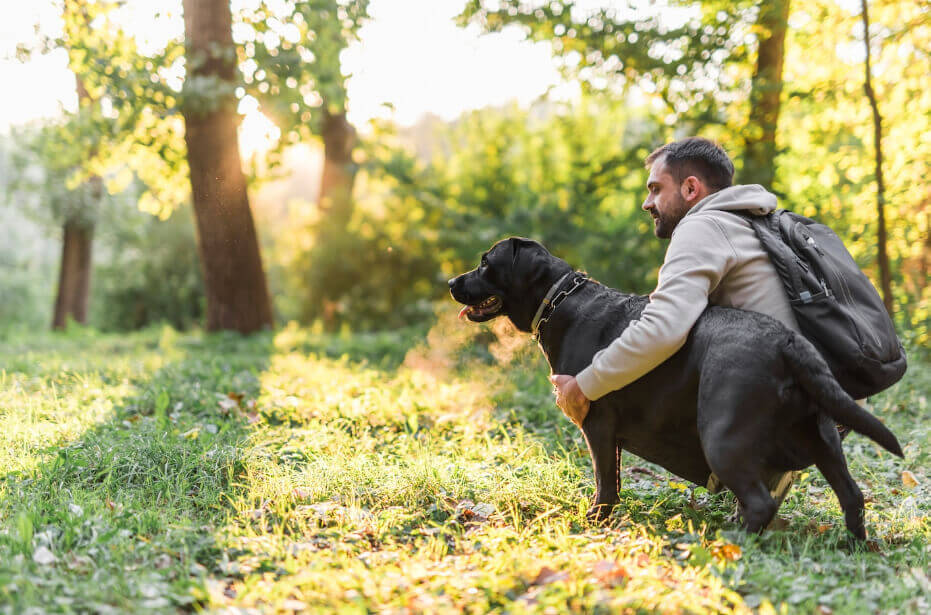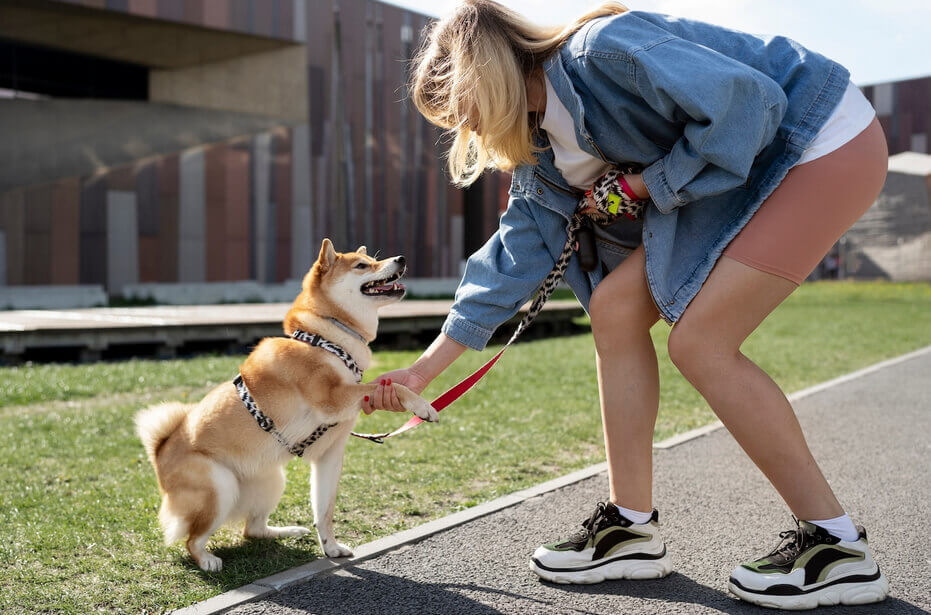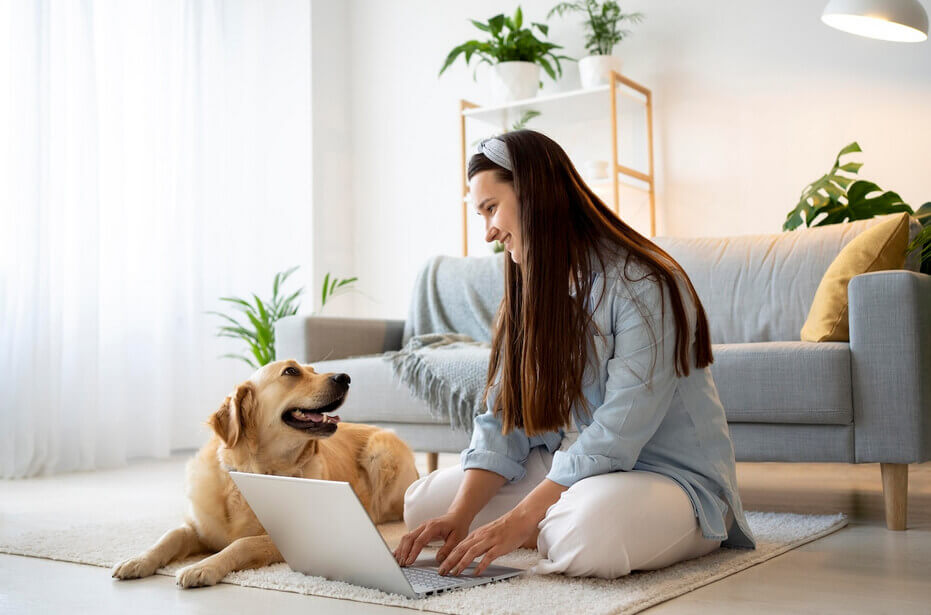Board and Train Programs: Comprehensive FAQs
Frequently Asked Questions
Choosing a board-and-train program for your dog raises many concerns. Will my dog be happy and well-cared for? Are the training methods humane and effective? How can I ensure the new behaviors last? These common worries among dog owners highlight the need for clear, reliable information.
To address these concerns, we’ve gathered the most pressing questions from dog owners and provided detailed answers. This guide aims to ease your apprehensions, offering insights into the structure, benefits, and outcomes of board and train programs. Our objective is to help you make an informed decision, ensuring you and your dog embark on this training journey with confidence.
FAQ 1: “I’m Worried About Leaving My Dog; Why Should I Consider a Board and Train Program?”
Choosing a board and train program for your dog is a significant decision, especially if you’re concerned about the emotional impact of separation. However, these programs offer unique advantages that significantly benefit you and your dog. Firstly, board and train programs provide an immersive learning environment where your dog can receive consistent, professional training. This is particularly beneficial for addressing complex behaviors or instilling new skills in a focused setting.
Moreover, while you’re away, your dog won’t just sit in a kennel; they’ll be engaged in daily training sessions, socialization, and enrichment activities designed to improve their well-being. This comprehensive approach ensures your dog is learning and enjoying their time.
Additionally, the professional guidance your dog receives can lead to breakthroughs in training that might take much longer to achieve in a standard home environment. Ultimately, a board and train program can be a transformative experience, setting the foundation for a better relationship between you and your dog.
FAQ 2: “How Long Will My Dog Need to Stay in a Board and Train Program?”
A board and train program’s duration varies depending on your specific goals for your dog. A shorter stay, typically around four weeks, is often sufficient for basic obedience training and socialization. This period allows enough time for your dog to learn fundamental commands and behaviors in a structured environment.
However, if your dog is dealing with more complex behavioral issues, such as aggression, fear, or severe anxiety, a longer program, possibly eight weeks or more, may be recommended. These behaviors require a more nuanced approach, including behavior modification techniques and gradual desensitization, which take time to implement effectively.
Discussing your dog’s needs and training objectives with the program providers is important to determine the most appropriate length of stay. The goal is to ensure your dog receives the proper training to make significant, lasting improvements.
FAQ 3: “Will My Dog Behave Differently at Home After Board and Train?”
After a board and train program, you can expect positive changes in your dog’s behavior at home. The intensive training and socialization they receive are designed to instill new behaviors and correct unwanted ones. However, the key to maintaining these improvements lies in your involvement and commitment to reinforcing the training at home.
Upon completion of the program, trainers typically provide a transition session for you and your dog. This session is crucial as it teaches you how to reinforce the learned behaviors, ensuring consistency between the training environment and your home. Additionally, many programs offer follow-up support to address any questions or challenges that may arise, helping you and your dog adjust smoothly.
Applying the training techniques consistently and integrating them into your daily routine is essential for lasting results. This continued effort helps solidify the new behaviors, making them a permanent part of your dog’s repertoire.
FAQ 4: “What Role Do I Play in My Dog’s Board and Train Experience?”
As a dog owner, your role in the board and train process is pivotal to the program’s success. While your dog learns new behaviors and skills, your involvement ensures lasting and effective changes in your home environment. Most board and train programs include owner education as a critical component of the training process. This typically involves:
- Transition Lessons: At the end of the program, you’ll receive one or more sessions to learn about your dog’s training, understand the commands it has learned, and practice the techniques under the guidance of a professional trainer.
- Follow-Up Support: Many programs offer follow-up support through additional lessons, phone consultations, or online resources to help you address any challenges that arise as you work with your dog at home.
- Consistent Reinforcement: You’re encouraged to apply the training techniques consistently and commands your dog has learned, reinforcing its new behaviors to ensure they remain effective over time.
Your commitment to learning and applying these new skills is essential. The more engaged you are in the process, the better the outcomes will be for you and your dog.
FAQ 5: “Are the Training Methods Used Kind and Effective?”
Reputable board and train programs prioritize using kind, effective, scientifically supported training methods. These methods focus on positive reinforcement, rewarding desired behaviors to encourage repetition rather than punishing unwanted behaviors. This approach fosters a positive learning environment and strengthens the bond between you and your dog. Key principles include:
- Positive Reinforcement: Using treats, praise, or toys to reward your dog for performing a desired behavior.
- Consistency: Applying the same rules and cues consistently to help your dog understand and meet expectations.
- Patience and Understanding: Recognizing that each dog learns at their own pace and adjusting training methods to suit their needs.
By employing these humane and effective training techniques, board and train programs ensure that your dog learns in a supportive, stress-free environment, leading to better and more lasting behavioral outcomes.
FAQ 6: “Is a Boarding Kennel Stressful for Dogs? How Do You Manage This?”
While the idea of a boarding kennel might conjure images of stressed dogs, many board and train facilities are designed to minimize stress and promote a positive, enriching experience. Our facility in D for Dogz Training goes to great lengths to ensure dogs feel safe, comfortable, and engaged throughout their stay. Key features include:
- Private Suites: Dogs are housed in individual suites rather than traditional kennel rows, reducing stress from direct visual and auditory contact with other dogs.
- Enrichment Activities: Daily schedules include training sessions, playtime, and exercise, ensuring dogs are mentally and physically stimulated.
- Professional Care: Experienced staff monitor the dogs’ well-being, adjusting routines to accommodate individual needs and preferences.
By addressing the potential stressors associated with boarding, these programs create a nurturing environment where dogs can thrive and learn effectively.
FAQ 7: “What If My Dog Has Specific Behavioral Issues Like Aggression or Fear?”
Board and train programs are particularly beneficial for dogs with specific behavioral issues, including aggression, fear, or anxiety. These programs offer:
- Tailored Training Plans: Professional trainers assess your dog’s unique needs and develop a customized training plan to address specific issues.
- Expertise: Trainers with experience in behavior modification techniques can safely and effectively work with dogs exhibiting challenging behaviors.
- Intensive Focus: The immersive environment allows for concentrated effort on behavior modification, providing consistent, daily training that might be difficult to replicate at home.
It’s important to communicate openly with the training facility about your dog’s issues to ensure they are equipped to handle them. Even dogs with significant behavioral challenges can make remarkable progress with the right approach.
FAQ 8: “Can You Guarantee My Dog Will Improve?”
While board and train programs have a high success rate in improving dog behavior, it’s important to understand that every dog is an individual, and outcomes can vary. Reputable programs will:
- Set Realistic Expectations: Provide a clear understanding of what can be achieved within the program’s timeframe.
- Offer Follow-Up Support: Ensure you have the tools and knowledge to continue your dog’s progress at home.
- Emphasize Owner Involvement: Highlight the importance of your role in reinforcing and maintaining new behaviors.
Improvement is not guaranteed; it depends on the dog’s background, the complexity of the behavior being addressed, and the owner’s commitment to following training recommendations.
FAQ 9: “How Much Does a Board and Train Program Cost?”
The cost of a board and train program can vary widely based on several factors, including:
- Duration of Stay: Longer programs, often required to address more complex behavioral issues, will cost more due to the extended care and training involved.
- Facility and Trainer Expertise: Programs that offer specialized facilities or are run by highly qualified trainers may charge more for their services.
- Included Services: Some programs include additional services such as follow-up training sessions, support, and materials, which can affect the price.
Generally, you can invest several hundred to a few thousand dollars in a board and train program. It’s advisable to discuss pricing and what’s included with the training facility to ensure the program fits your budget and meets your expectations.
FAQ 10: “What Happens If My Dog Needs More Training After the Program?”
In cases where a dog may require additional training after the completion of a board and train program, most facilities offer several follow-up options to ensure continued progress:
- Follow-Up Sessions: Many programs include or offer the option to purchase follow-up sessions where trainers can address any emerging issues, refine skills, or work on new behaviors.
- Remote Support: Facilities often provide remote support through phone calls, video chats, or email consultations to assist with questions and guide you through any challenges.
- Additional Training Packages: For dogs needing more extensive follow-up, some programs offer additional training packages tailored to your dog’s specific needs.
The goal is to provide ongoing support to ensure the training’s effectiveness and your satisfaction with your dog’s behavior.
FAQ 11: “How Can I Ensure the Training Sticks Once We’re Home?”
Ensuring the training sticks after returning home involves several key practices:
- Consistency: Apply the commands and techniques you and your dog learned during the program consistently at home. Consistency helps reinforce the training and integrate it into your daily routine.
- Positive Reinforcement: Use positive reinforcement to encourage and reward desired behaviors. This includes treats, praise, or playtime, depending on your dog’s motivation.
- Routine: Establish and maintain a routine that includes regular practice of the learned behaviors, exercise, and mental stimulation to keep your dog engaged and happy.
- Owner Education: Take advantage of any owner education the training program provides. Understanding the principles behind the training methods and how to apply them effectively is crucial for long-term success.
By following these practices, you can significantly increase the likelihood that the improvements made during the board and train program will be lasting and beneficial for you and your dog.
Final Thoughts
This comprehensive FAQ guide has addressed some of dog owners’ most pressing concerns and questions regarding board and train programs. From understanding the reasons to consider such a program to the duration, training methods, and how to ensure lasting results, we’ve covered essential aspects to help you make an informed decision. The success of a board and train program not only depends on the trainers’ expertise and the program’s quality but also significantly on the involvement and commitment of the dog owner.
By choosing a reputable program that uses kind and effective training methods and actively participating in your dog’s training process, you can ensure a positive outcome that enhances the bond between you and your dog. Remember, these programs aim to train your dog and equip you with the knowledge and skills to continue your dog’s education at home.
With the right approach and ongoing support, the improvements achieved during the board and train can last a lifetime, leading to a happier and more harmonious relationship with your furry friend.
Interested in a comprehensive solution for your dog’s training needs? Explore our board and train program at D for Dog Training. Begin the journey to better behavior today!
What Our Clients Say
“I took several classes with D For Dogz and loved all of them. I really enjoyed that many of the classes were held in different locations around town so your pup gets to practice the skills in the real world.”
“The one thing that sets Kaajal apart from other trainers is that she uses Positive reinforcement methods and is remarkably good at training humans in how they connect with their puppy as that sets the right foundation.”






















